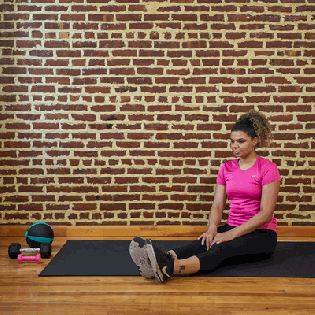
Yoga is an excellent exercise that involves combining breath with movement, which reduces blood sugar levels. Yoga helps relax the body and improve blood flow, which can in turn help improve diabetes symptoms. Yoga can be especially helpful for diabetics, as it can help improve the function of the pancreas and lower blood pressure. It is beneficial for high blood sugar patients. This is why it is so highly recommended for patients with diabetes.
You can do it at home, and it is considered safe. However, you should consult your doctor before beginning any yoga program. People with diabetes should avoid doing high-impact, or fast-paced yoga. Avoid head stands and forward bends as these pose can increase blood pressure. For example, if you have diabetes, you should consult a doctor before performing these exercises.
Diabetes patients can also benefit from yoga to manage their stress. Some asanas increase the pancreas' ability to produce insulin. Yoga improves insulin production and glucose levels. As with any exercise program, it is important to consult a doctor before beginning any yoga exercises. Talk to your doctor about the benefits of yoga and get advice on choosing the right program.

There are many other benefits to yoga for diabetics. One of the most important poses is the Ardha Matsyendrasana. It massages the internal organs. It can also lower the risk of heart disease, because it promotes the release of insulin. This practice has been shown in studies to lower diabetes risk and improve overall well-being. You must monitor your blood sugar regularly and use prescribed medication.
Yoga for diabetics has many additional benefits. It improves blood circulation and the functioning of endocrine glands. This can help diabetics manage stress. Type 1 diabetes can be managed by managing stress. Stress can cause insulin resistance and make the body less able to produce insulin. However, stress can also make insulin production more difficult.
Yoga has many positive effects on the body. It also reduces the chance of developing diabetes. It improves the efficiency and blood sugar balance by allowing for internal muscle stretching. Additionally, it can help control the stress level in diabetics and those with prediabetes. Even though yoga isn't suitable for everyone, studies have shown that it can be beneficial to people with diabetes.
While yoga may improve blood glucose levels in some cases, there are other limitations. Yoga clinical trials are often lacking proper control groups, a small number of participants and a short duration. These studies may not show all benefits of yoga. The results of these studies are affected by many factors. The most important factor is that exercise helps to manage stress and lowers diabetes risk.

The benefits of yoga are numerous. Even though it is not aerobic exercise, yoga can increase blood sugar and decrease waist size. This is important for diabetics. It can help with constipation and improve your heart health. It can also improve your mood and lower your blood pressure. For diabetics, yoga is the best form medicine. It will provide them with the energy they require to live a healthy lifestyle.
Another benefit to yoga is its ability help with diabetes. It can prevent diabetes-related nerve damage, such as neuropathy. It can also lower blood sugar levels. This is a great benefit for people who have diabetes. It has even been proven to improve the quality and life expectancy of those with diabetes. You should always exercise under the guidance of a professional.
FAQ
What does milk do for men?
Next time you buy milk think about what you could do with it. You might also find it helpful to stop drinking coffee.
The benefits of milk have been demonstrated to be both beneficial to children and adults. Milk provides children with nutrients such as vitamin D, calcium, potassium, phosphorous, and magnesium.
It promotes weight gain, digestion, bone strength, and aids digestion. The immune system is stronger and there are fewer illnesses in adults who consume dairy products.
Lactose is also a major component of milk, so those who are unable to digest it easily can still enjoy the benefits of this sugar without having stomach problems.
You can drink more milk than you would soda or juice. Your teeth and bones can be strengthened by drinking milk rich in vitamin D and calcium.
Plain low-fat milk can be used to make yogurt if you don’t like the taste. Yogurt is a great alternative to milk since it is lower in calories and higher in protein.
Probiotics are also found in yogurt, which help with digestion and boost immunity.
Try warm milk to help you fall asleep. Warm milk can relax muscles and increase serotonin levels. This will help you sleep well.
Do Men Need A Gym Membership?
A gym membership is not necessary for men. If you sign up for a gym, however, your money will be much more valuable.
Many gyms offer free trial memberships that allow you to test the facilities before signing up for any monthly fees.
You can use the gym at any time you want, and it doesn't cost anything. Your membership can be cancelled at any time you choose to love it or not.
How often should I exercise each week?
It all depends on how much time and what kind of exercise you like. It's a good idea to do moderate-intensity aerobic exercises 3 - 5 times per week. It's important that you don't overdo it. You will get the maximum benefits from your workouts if you do not exercise consistently.
Which exercises work best for you?
It really depends on the type of fitness goal you have. Some people prefer endurance sports like swimming, cycling, or running. Some people enjoy lifting weights and using resistance bands. There are many types of exercise programs today. Choose an option that suits your lifestyle.
Which is the best order to exercise?
It depends on what you are looking for. You should start with heavy weights if your goal is to build muscle mass. Then move into cardio. Then if you want to lose weight, go from cardio to strength training.
You can burn fat by just doing cardio. Then add strength training after.
Cardio is the best way to build muscle mass.
Eat before you go to the gym. This will fuel your muscles, making them work harder. Plus, it makes you feel better during your workout.
Statistics
- Are You One of the 20% of Guys (mh.co.za)
- According to the American Heart Association, blood pressure should be checked at least once every two years, beginning at age 20. (my.clevelandclinic.org)
- An estimated calorie range for moderately active adult males falls between 2,200 to 2,800 calories per day, depending on age. (eatright.org)
- 10 pounds in a month is likely during a lean bulking phase, especially for beginners. (muscleandstrength.com)
- Get free shipping and 25% off today. (healthline.com)
External Links
How To
How can I burn fat while exercising?
Exercise reduces calories by increasing metabolism, and oxygen consumption.
At moderate intensity, you will lose weight easily.
These tips will help you burn fat and keep fit while exercising.
-
Do cardio exercises such as walking, swimming, jogging, cycling, running, or elliptical training.
-
Three times per week, exercise for 30 minutes.
-
You can lose weight by adding strength training to the routine.
-
Avoid intense training. You can build muscle without breaking down muscle tissue.
-
Drink plenty of water during exercise. Water helps flush out toxins and keep your body properly hydrated.
-
After exercising, you should drink low-fat protein drinks. Protein shakes help repair muscles and boosts energy.
-
Eat smaller meals throughout the day, so you don't feel hungry between meals.
-
Don't skip breakfast! Skipping breakfast can make you tired and sluggish.
-
Take care of your mind. Stressful situations may slow down your metabolism.
-
Keep a positive attitude. Research shows that overweight people gain more weight if they believe they are overweight than those who believe they look good.
-
Get enough sleep. A lack of sleep makes it difficult to lose fat.
-
Active living is key. Be sure to get up and move around every hour or two.
-
Maintain a healthy diet. You will feel fuller longer if you eat right.
-
Find relaxation techniques. An anxious mind won't allow your body release stress hormones, which can lead to the destruction of muscle tissue.
A balanced diet provides all the nutrients necessary for growth and development.
You should eat six small meals per day rather than three large ones. This gives your body the time it needs to process what you've eat.
For strong bones to be maintained, you need approximately 500mg of calcium per day. Calcium is found in dairy products like yogurt, fortified milk beverages, orange juices, cereals and bread.
Calcium is found in green leafy vegetables, beans, tofu, seeds, nuts, and cheese.
Vitamin D is required by the body to absorb calcium. Vitamin D can also be found in some fortified foods such as eggs, fish, and yolk.
Vitamin E is crucial for skin health. Vitamin E can be found in vegetable oils as well as wheat germ oil, peanuts and almonds.
Your body needs zinc for normal immunity function and wound healing. Zinc can be found in seafood, legumes and meats.
Zinc deficiency can cause fatigue and loss of appetite. It can also lead to depression and impaired immunity.
Eating too much sugar causes insulin resistance, which increases blood glucose levels. Insulin resistance is linked to weight gain.
Insulin resistance develops when there are high levels of free radicals in the bloodstream. Free radicals are molecules containing unpaired electrons which cause damage to cells membranes.
Free radicals come mainly from food additives, pesticides, herbicides, preservatives, smoking, air pollution, radiation, chemicals in cosmetics, lotions, and household cleaning supplies.
Free radical damage can lead cancer, heart disease or diabetes, arthritis, asthma, or other forms of aging.
To prevent free radical damage, eat a healthy diet rich in antioxidants. Antioxidants protect against oxidative damage.
Vitamin C is found in citrus fruits and beta carotene is found in carrots.
Additional antioxidant nutrients include selenium and copper, manganese and zinc.
Selenium is known to protect cells from the oxidative damage that free radicals can cause. Selenium may be found in Brazil nuts as well tuna, liver and kidneys. It can also be found on shrimp, cod, turkey, beef lamb, pork, chicken, and other foods.
Copper protects your eyes, brain, eyes and red blood cell. Copper is found in shellfishes, poultry, meat, organ meats, and other foods.
Manganese forms an essential part of bone structure. Manganese can be found in brown rice and spinach as well as bananas, prunes raisins, oatmeal, lentils, and oatmeal.
Zinc helps with normal growth, reproduction, as well as wound healing. Zn is found in lean cuts of meat, white fish, poultry, and eggs.